Related Research Articles

Centipede is a 1981 fixed shooter arcade video game developed and published by Atari, Inc. Designed by Dona Bailey and Ed Logg, it was one of the most commercially successful games from the golden age of arcade video games and one of the first with a significant female player base. The primary objective is to shoot all the segments of a centipede that winds down the playing field. An arcade sequel, Millipede, followed in 1982.
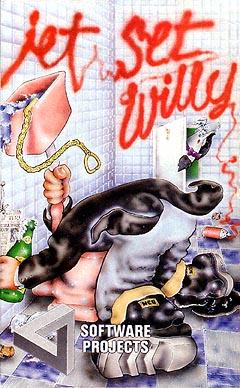
Jet Set Willy is a platform video game written by Matthew Smith for the ZX Spectrum home computer. It was published in 1984 by Software Projects and ported to most home computers of the time.

Miner 2049er is a platform game developed for Atari 8-bit computers by Bill Hogue and released by his company, Big Five Software, in 1982. The player controls Bounty Bob through multiple levels of a mine, with the goal of traversing all of the platforms while avoiding or defeating enemy mutants. At a time when "climbing games" such as Donkey Kong had four screens, Miner 2049er had ten.
1983 has seen many sequels and prequels in video games, such as Mario Bros. and Pole Position II, along with new titles such as Astron Belt, Champion Baseball, Dragon's Lair, Elevator Action, Spy Hunter and Track & Field. Major events include the video game crash of 1983 in North America, and the third generation of video game consoles beginning with the launch of Nintendo's Family Computer (Famicom) and Sega's SG-1000 in Japan. The year's highest-grossing video game was Namco's arcade game Pole Position, while the year's best-selling home system was Nintendo's Game & Watch for the third time since 1980.
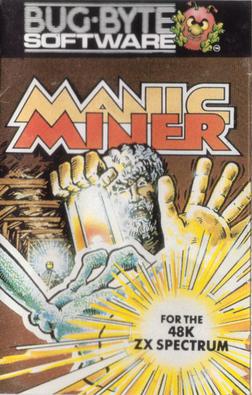
Manic Miner is a platform game written for the ZX Spectrum by Matthew Smith. It was published by Bug-Byte in 1983, then later the same year by Software Projects. The first game in the Miner Willy series, the design was inspired by Miner 2049er (1982) for the Atari 8-bit computers. Retro Gamer called Manic Miner one of the most influential platform games of all time, and it has been ported to numerous home computers, video game consoles, and mobile phones.

Matthew Smith is a British computer game programmer. He created the games Manic Miner and Jet Set Willy for the ZX Spectrum, released in 1983 and 1984 respectively. Smith left the games industry in 1988 and later moved to the Netherlands. He has since returned to the UK and has worked on some games as well as appearing at conventions and in documentaries.

Jetpac is a shooter video game developed and published by Ultimate Play the Game and released for the ZX Spectrum and VIC-20 in 1983 and the BBC Micro in 1984. It is the first game to be released by Ultimate Play the Game, the company which later became Rare. The game follows Jetman as he must rebuild his rocket in order to explore different planets, while simultaneously defending against hostile aliens. It was written by Ultimate co-founder Chris Stamper with graphics designed by his brother, Tim Stamper. Reviewers praised Jetpac's presentation and gameplay, and it won "Game of the Year" at the Golden Joystick Awards in 1983.
1984 saw many sequels and prequels along with new titles such as 1942, Boulder Dash, Cobra Command, Jet Set Willy, Karate Champ, Kung-Fu Master, Yie Ar Kung-Fu and Punch-Out!! The year's highest-grossing arcade games were Pole Position in the United States, for the second year in a row, and Track & Field in the United Kingdom. The year's best-selling home system was Nintendo's Family Computer (Famicom), which was only sold in Japan at the time.

Chuckie Egg is a platform game released by A&F Software in 1983 initially for the ZX Spectrum, BBC Micro, and Dragon 32/64. It was ported to the Commodore 64, Acorn Electron, MSX, Tatung Einstein, Amstrad CPC, and Atari 8-bit computers. It was later updated for the Amiga, Atari ST, and IBM PC compatibles.
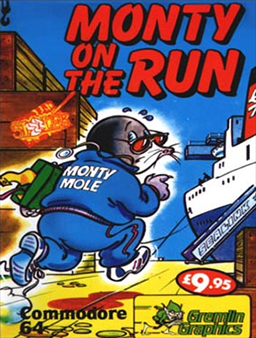
Monty on the Run is a computer game created by the software house Gremlin Graphics and released in 1985 for the Commodore 64, ZX Spectrum, Amstrad CPC and Commodore 16, written by Peter Harrap for the ZX Spectrum with the iconic in-game music on the Commodore 64 provided by Rob Hubbard. It is the third game in the Monty Mole series.

Jet Set Willy II: The Final Frontier is a platform game released 1985 by Software Projects as the Amstrad CPC port of Jet Set Willy. It was then rebranded as the sequel and ported to other home computers. Jet Set Willy II was developed by Derrick P. Rowson and Steve Wetherill rather than Jet Set Willy programmer Matthew Smith and is an expansion of the original game, rather than an entirely new one.
Software Projects was a computer game development company which was started by Manic Miner developer Matthew Smith, Alan Maton and Colin Roach. After leaving Bug-Byte as a freelance developer, Smith was able to take the rights to his recently developed Manic Miner game with him, due to an oversight in his freelance contract. Software Projects was then able to market and publish the ZX Spectrum hit game separately from Bug-Byte. Their logo was a Penrose triangle.

Bug-Byte Software Ltd. was a video game company founded in 1980 in Liverpool, initially producing software for the Acorn Atom and ZX80. Bug-Byte's first hit was Don Priestley's Mazogs which was one of the most successful titles for the ZX81. In 1983, it published Manic Miner, considered to be one of the most influential platform games of all time. The company went into liquidation in 1985 but their name and logo were purchased by Argus Press PLC for use as a budget software label.
The ZX Spectrum's software library was very diverse. While the majority of the software produced for the system was video games, others included programming language implementations, Sinclair BASIC extensions, databases, word processors, spread sheets, drawing and painting tools, and 3D modelling tools.
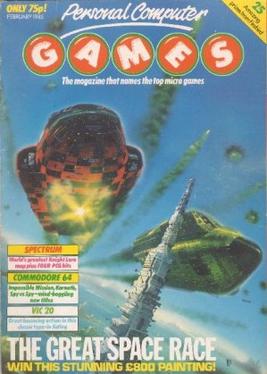
Personal Computer Games was a multi-format UK computer games magazine of the early/mid-1980s published by VNU.

Hunchback is a video game developed by Century Electronics and published in arcades in 1983. The game is loosely based on the 1831 Victor Hugo novel The Hunchback of Notre-Dame and the player controls Quasimodo. Set on top of a castle wall, the player must guide the Hunchback from left to right while avoiding obstacles on a series of non-scrolling screens. The goal of each screen is to ring the church bell at the far right.
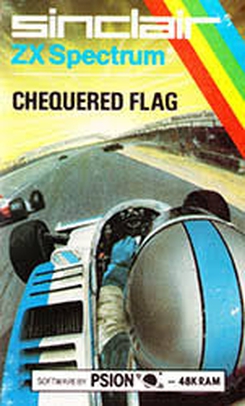
Chequered Flag is a racing video game developed by Psion Software and published by Sinclair Research in 1983. It was the first driving game published for the ZX Spectrum and one of the first computer car simulators.

Bugaboo (The Flea), later published in Spain as La Pulga, is a video game written by the Spanish programming duo Paco Portalo and Paco Suarez for the ZX Spectrum and published by Quicksilva in 1983. It was later released for the Commodore 64 and MSX were produced. The Amstrad CPC port was published under the name Roland in the Caves using the Roland character.
Roland was a game character developed in 1984 by Alan Sugar, CEO of Amstrad, and Jose Luis Dominguez, a Spanish game designer. The character was named for Roland Perry, a computer engineer who worked for Amstrad. The idea was to have one recognizable character in a number of different computer games in a bid to have the Amstrad CPC compete with the ZX Spectrum and the Commodore 64.
References
- ↑ "PCW Article on Matthew Smith". www.carlylesmith.karoo.net. Retrieved 2018-08-29.
- ↑ "Matthew Smith interview with Iain Lee". Thumb Candy. Archived from the original on 2010-06-05. Retrieved 2009-08-10.
- ↑ The Perils of Willy at VIC 20 Gamer Archived September 18, 2010, at the Wayback Machine
- ↑ "Andre's Night off - Manual". Archived from the original on 2016-03-04. Retrieved 2015-04-30.
- ↑ World of Spectrum listing, showing the large number of fan-made Jet Set Willy sequels.